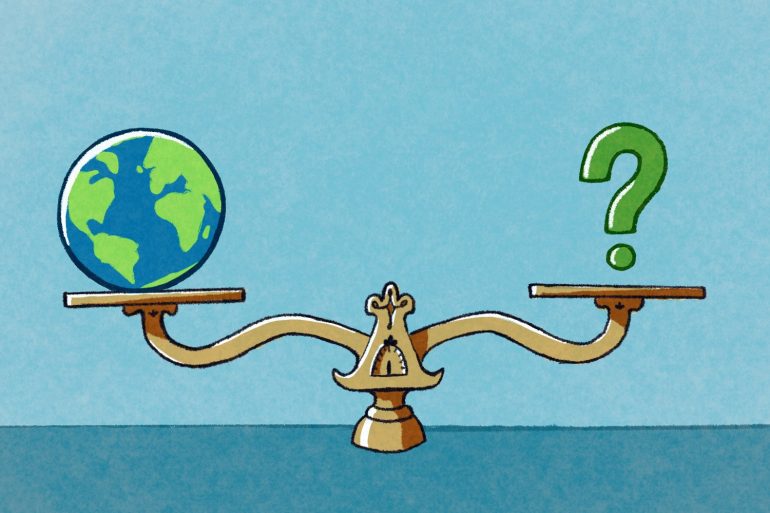If you had asked me what I thought sustainability was two years ago, I wouldn’t have had much of an answer. If you had asked me what I thought sustainability was a year ago, I would have shown you my metal straw, reusable water bottle and my beloved Baggu grocery bags, and then went on without another thought. If you asked me what sustainability was today I would tell you there’s no short answer (but if you’d like to listen to me ramble I’d be happy to make you a very detailed presentation).
The shortest answer I could give you is that sustainability encompasses everything. From how we create our energy sources to where we buy our clothes, sustainability relates to every aspect of how we interact with the Earth. Sustainability has become one of social media’s most popular buzzwords. It’s been plastered so much all over various social platforms and over the last few months, it even began to make an impression on mainstream media. But the thing about buzzwords is they’re often only surface level. Rarely do these trending words dig deep into the nitty-gritty details.
When I first realized the severity and depth behind sustainability, I felt like the floor had disappeared below me. I distinctly remember the stream of panic attacks followed by the sinking realization that we were killing our planet at an exponential rate, therefore starting our mass extinction. That isn’t a pleasant thought to have at 2 a.m.
In this haze of climate anxiety, I stress ordered more reusable bags and fell down the deep, dark internet void of climate statistics (don’t recommend). It was then that I realized the mix of emotions was both crushing fear and suffocating uselessness. Sustainability goes far beyond a metal straw and reusable bag—if you feel attacked by that sentence then please remember that I’m included in that jab and it took a panic attack for me to figure it out—but they are a good place to start. I’m a big proponent of beginning a sustainable lifestyle with little steps (reusable straws, water bottles, bags, recycling) but I think it’s important to remember to reach farther than that. The little steps make a difference, but the hard truth is it’s not enough.
So where do we start? It’s an age-old question that scares many away because there’s no easy answer. What’s my answer to that question? It’s simple:
Anywhere you can.
Maybe it’s the small steps. Tick those off your list, reap the reward of feeling good about yourself because you’re doing good for the planet (and let’s not lie, that’s a very trendy thing right now). Once those warm tingles wear off, though, know that it’s time to push forward and make bigger changes. Change your cleaning products to those with less damaging chemicals. Keeps tabs on your fast fashion consumption, maybe thrift instead. Buy beauty and wellness products that are friendly to your body and the planet. Choose your groceries wisely, only buy what you will eat. Abstain from spraying pesticides. I know the list goes on and on, but taking a look at it now, do any of those individually seem like life-altering changes?
Transitioning to a sustainable lifestyle doesn’t have to be some big hoopla, it can happen gradually but it needs to begin now. No one expects the entire species to go zero-waste, carbon-neutral and solar-powered overnight, it’s not practical. Frankly, it’s not possible. But what we should expect is for people to be trying. We should be expecting conscious consumption.
Sustainability reaches farther than our personal bubbles. It’s not just about what happens under your roof, but what’s outside as well. Voting, both with your ballot and your dollar, makes a monumental difference in the course of society. Do the politicians you support have the planet at the forefront of their minds? Do the brands you buy from provide ethical products with a minimal footprint? It’s hard to believe that as one single person in a very large world, we have the power to change anything but the reality is, we do.
Metal straws took over the world simply by exposure on social media. Brands, big and small, began selling them because it was something consumers wanted and even though that seems minuscule, the metal straws paved the way for bigger sustainable conversations. Those conversations will encompass every part of life, many of which we don’t think about consciously.
It seems like the hardest part of sustainability would be to get everyone on board with the big steps. The end of fossil fuels. Creating renewable energy sources. Banning non-recyclable, non-biodegradable and non-compostable packaging. Mandating ethical labor. Managing waste production. Minimalizing animal consumption. Again, the list goes on, but this time these topics are much heavier and controversial. These are the ideas that people get hung up on, they jump past the little steps and run straight towards the mammoth. These ideas are crucial, but on a mass scale, the world isn’t there yet.
Every scientific report will tell you that we are running out of time to turn our environment around. There’s no way to sugarcoat it, that’s terrifying. But instead of being stricken by fear and refusing to accept an impending future, communicate, educate and mobilize. The hardest part of sustainability isn’t making the big changes happen, it’s getting the small changes, the seemingly unimportant ones, to happen on a worldwide scale.
Talk to your friends and family, communicate the importance of sustainability within your circle and eventually, it will spread. Do your research, ask questions and hold people accountable because it’s not just your earth and it’s not just theirs, it’s everyone’s. Protest, petition and vote because apathy is no longer something this world can afford. Make sustainability more than a buzzword, more than a movement, more than a trending topic. Make it a reality.
Written by Hana Lorne
Illustration by Taryn Smith

